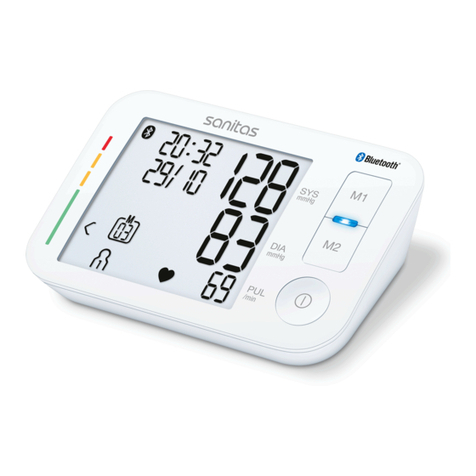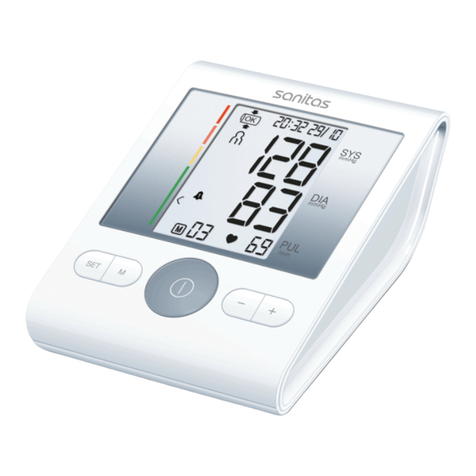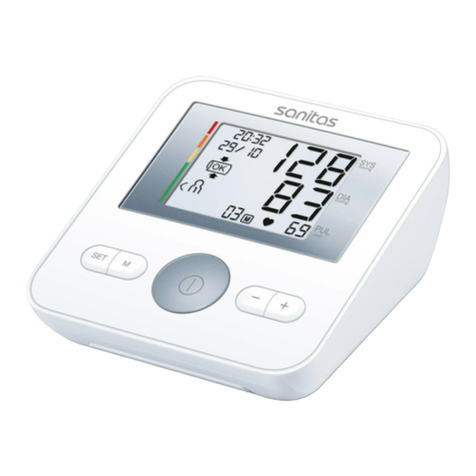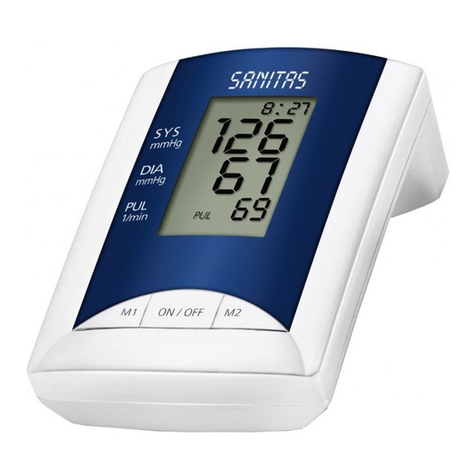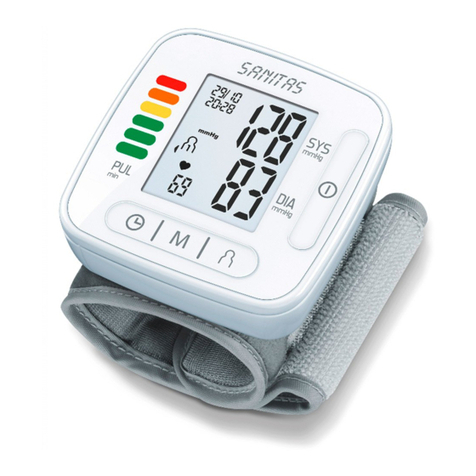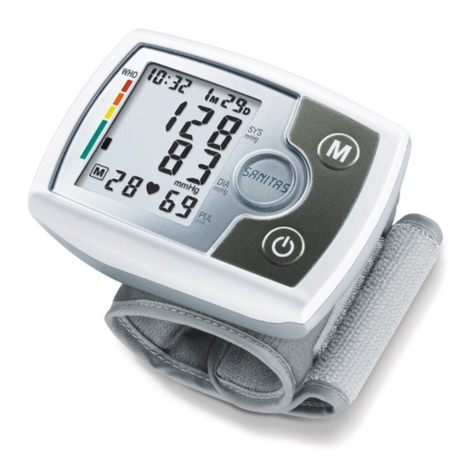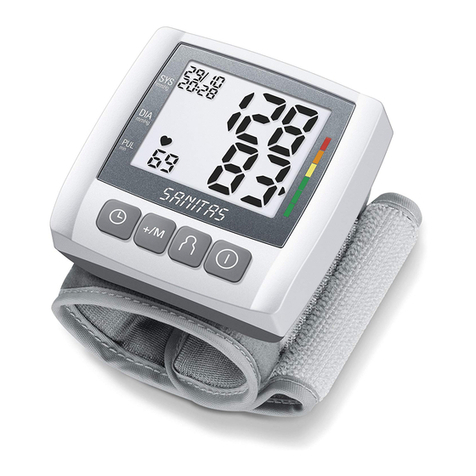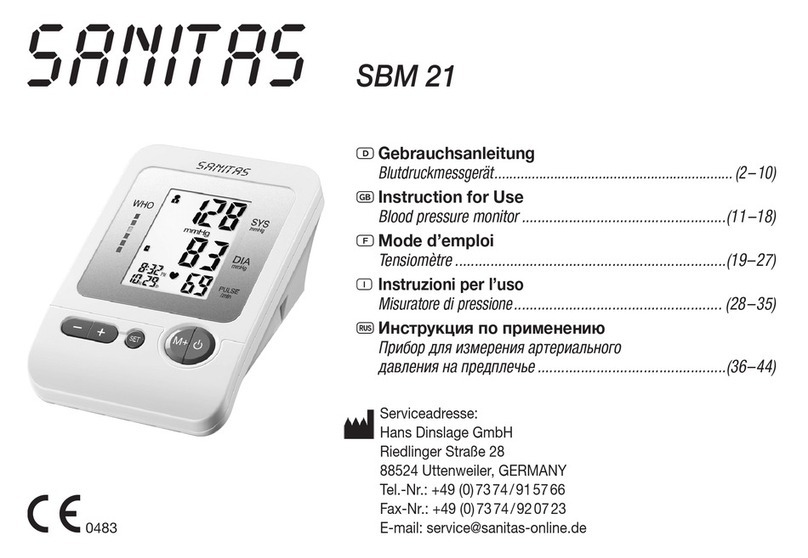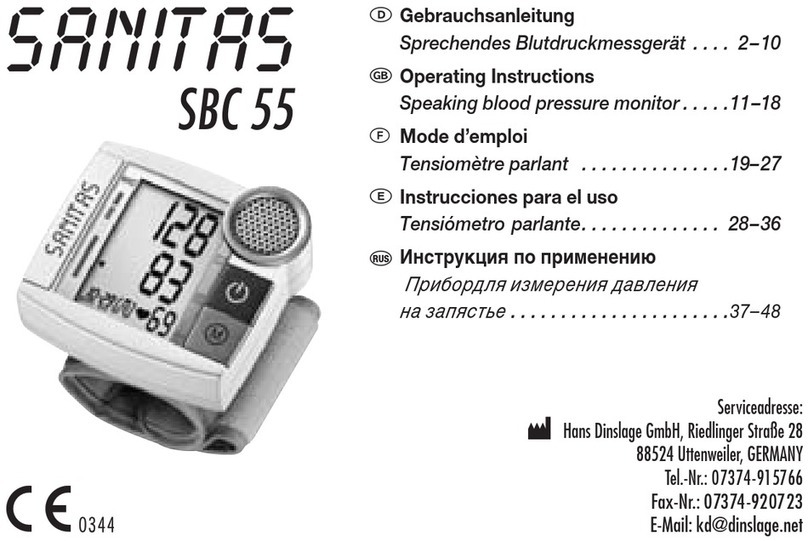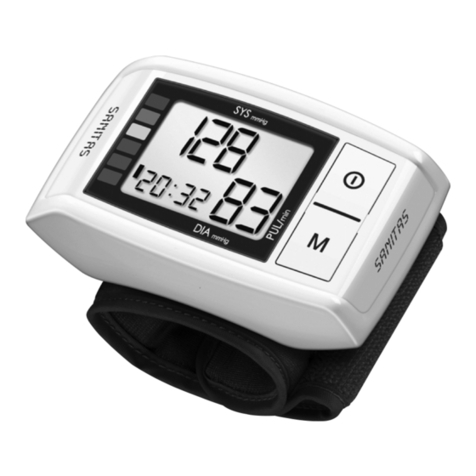11
Please read these instructions for use carefully and keep them
for later use, be sure to make them accessible to other users
and observe the information they contain.
1. Getting to know your instrument
The upper arm blood pressure monitor is used for non-invasive
measurement and monitoring of adults’ arterial blood pressure.
You can use it to measure your blood pressure quickly and eas-
ily, storing the results and displaying the progression of read-
ings together with the average.
A warning is issued for anyone suffering from cardiac arrhythmia.
The values determined are classified and graphically evaluated
according to WHO guidelines.
Keep these instructions carefully for further use and also let
other users have access to them.
2. Important information
Advice on use
•
Always measure your blood pressure at the sam time of day,
in order to ensure that values are comparable.
•
Relax for approx. 5 minutes before each measurement.
•
You should wait five minutes before measuring a second
time.
•
The readings that you take may only be used for information
purposes – they are not a substitute for a medical examina-
tion! Discuss your results with the doctor. Never use them
to make medical decisions independently (e.g. regarding
medication and dosage thereof).
•
There may be incorrect measurements where there is cardio-
circulatory disease, as well as with very low blood pressure,
circulatory disorders, dysrhythmia and other preexisting
diseases.
•
Only use the instrument on persons whose upper arm has
the right circumference for the instrument.
•
You can operate the blood pressure monitor with batteries.
Note that it is only possible to save data when your blood pres-
sure monitor is receiving power. As soon as the batteries are
dead, the date and time on the blood pressure monitor are lost.
•
The automatic switch-off function switches off the blood
pressure monitor in order to preserve the batteries, if no but-
ton is pressed within 3 minutes.
Storage and Care
•
The blood pressure monitor is made up of precision electron-
ic components. Accuracy of readings and the instrument’s
service life depend on careful handling.
– You should protect the device from impact, moisture, dirt,
major temperature fluctuations and direct exposure to the
sun’s rays.
– Never drop the device.
– Do not use near strong electromagnetic fields, i.e. keep it
away from any radio systems and mobile phones.
– Only ever use the cuffs provided with the monitor or origi-
nal replacement cuffs. Otherwise erroneous results will be
recorded.
ENGLISH

